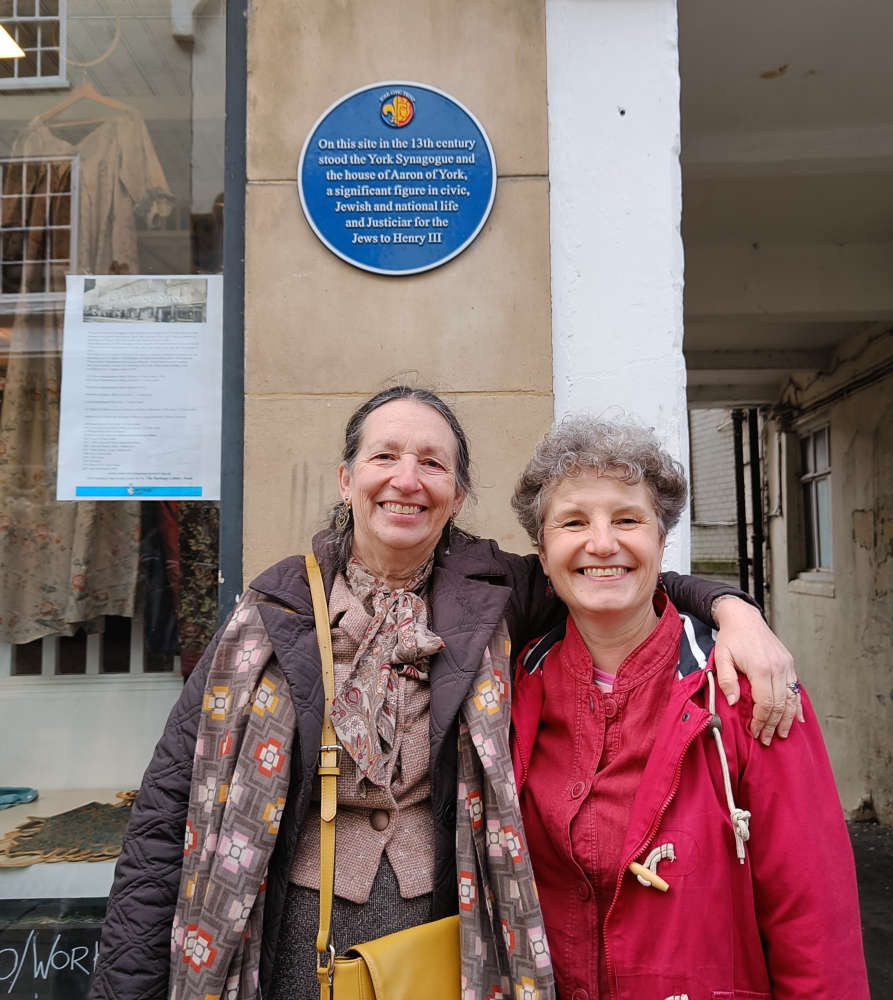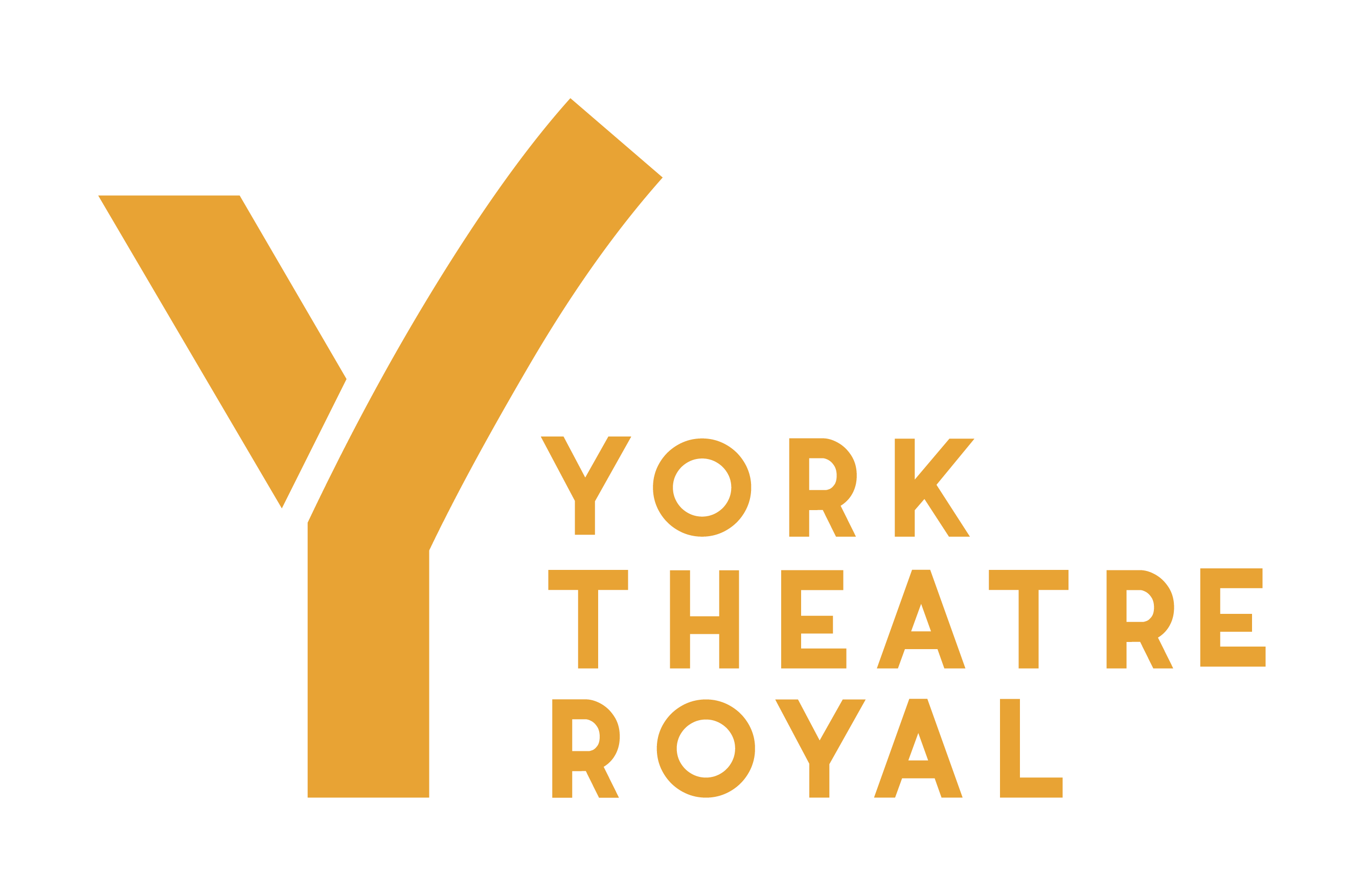
A new York Civic Trust blue plaque dedicated to mark the location of York’s 13th century Synagogue was revealed yesterday on Coney Street.
The Synagogue was at the heart of Jewish medieval life in the city and at a time when York was amongst the most important Jewish centres in the country.
Dating from c.1205 to 1290, the Synagogue provides fresh perspective on the history of York's Jewish community. After the tragic events of 1190 at Clifford's Tower where the city's Jewish community died as a result of antisemitic sentiments following the coronation of Richard the Lionheart, a group of Jewish individuals returned to live and work in York at the King's behest. During the first half of the 13th century, this second Jewish community experienced growth and prosperity, making for a story of resilience, co-operation and success that had previously been overlooked in the face of the massacre of 1190.
This new insight has come out of ‘The Jewish Neighbourhoods’ research, part of the ‘StreetLife: York’ project that explored the history of Coney Street and run by the University of York.
Speaking about the importance of the new research on York’s medieval Jewish heritage, Dr Louise Hampson of the University of York and StreetLife project, said, “This work came about somewhat unexpectedly through the StreetLife project which was a government-funded initiative focused on historic high streets. The choice of Coney Street for York started us on a process of discovery and rediscovery of the significance of the Jewish community to York's history in the 12th and 13th centuries, some aspects of which were known but the significance of which has not been fully appreciated. We are continuing to uncover new information which is revealing just how central the cooperation between the Jewish community and the other powerbrokers in York was to the development of the medieval city. I am delighted that in this ongoing work we can take this step in bringing this history into the mainstream and to wider attention.”
The blue plaque was revealed yesterday on the façade of the ‘Next’ building on Coney Street, where the Synagogue once stood.
The uncovering of the plaque was performed by Rabbi Dr Elisheva Salamo and attended by several dozen people. Of those attending, there were representatives of several local and national Jewish communities, who shared a desire to see the Synagogue’s site remembered, and have been involved in the plaque process including its phrasing and funding.
Appointed in 2023, Rabbi Elisheva Salamo is York’s first resident Rabbi in eight hundred years. Speaking of the importance of plaque to the York Liberal Jewish community, Rabbi Elisheva Salamo said, “We stand at the locus of an old hope after terrible times for Jews in York and throughout England. This second synagogue must have housed many scholarly debates, Shabbat prayers, and holiday celebrations. I hope it served only as a spiritual refuge and teaching center for all who dwelt in the city of York. It was erected in counterpoint to the rebuilt Clifford's Tower, which was burned during the massacre. So do we hope to establish the building of our modern Jewish community, rising again in the face of antisemitism, as a strong, welcoming and holy place, a sign that Jews remain part of our wonderful city.”
Dr Duncan Marks of the Civic Trust said, “This is the first blue plaque celebrating Jewish heritage in York. Just as the city today is culturally diverse, so too was our past, and should be celebrated. Whilst shopping and commercialism is sometimes said to be our ‘new religion’, this plaque shows us that over the centuries our shopping streets were used by a wide range of fascinating people and uses - enriching us all and something to be proud of."
The ‘StreetLife: York’ project has discovered just how important York’s medieval Jewish community was in local and national life, and how central Coney Street was to it.
Three important historic Jewish figures in the city were Aaron and his wife, Henna, and his nephew, Josce Le Jovene.
In 1236, Aaron assumed the position of arch-presbyter, or ‘Justiciar’, of the English Jews, a role appointed by the Crown to oversee the financial administration of the Jewry in England particularly in matters of taxation. Aaron lived in a stone house on Coney Street and the synagogue was just behind it. Following Aaron's death in the 1260s, his widow, Henna, continued to make grants and manage her late husband's business, striving to shield it from the increasingly harsh taxation and regulations imposed by the Crown.
Josce lived in a prestigious stone house where Waterstones is on Coney Street. As a wealthy moneylender, his services extended to local monasteries, including Fountains Abbey.
The Next building is one of many on Coney Street and along the riverfront of the Ouse that is set to be revamped as part of a major regeneration proposals should they be approved. The regeneration project, called Coney Street Riverside, is by York-based Helmsley Group, who also helped facilitate the plaque’s installation. Max Reeves, Director of Helmsely Group said of the importance of the street, “With its rich history spanning back to Roman times, Coney Street has long been a key commercial and cultural hub in the city. As proposals for the Coney Street Riverside project are developed, it’s important to recognize and preserve this heritage, ensuring we respect the street’s historical importance while contributing to the city’s evolving identity.”



 ‘Darkest Hour’ star Gary Oldman is coming to York!
‘Darkest Hour’ star Gary Oldman is coming to York!